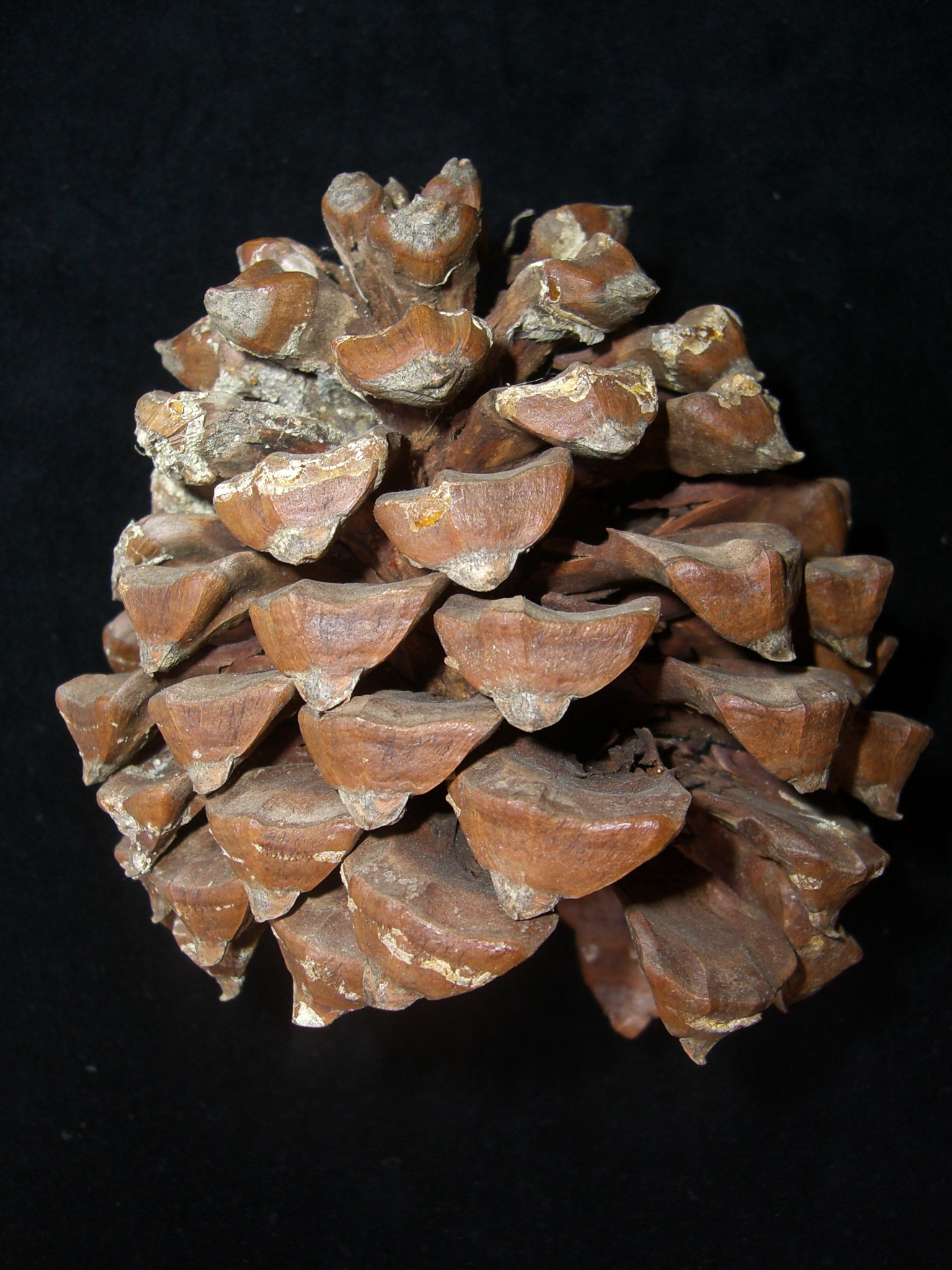
Tree to 10 m or so tall in the wild with a characteristic open habit with a branched trunk, ascending branches and narrow rather flattened crown, much taller and straight with the main trunk unbranched when grown in plantations. Bark with large red-brown scales. Branches short, ascending and thick. Buds cylindrical, resin absent, scales free and fringed. Young shoots waxy blue to reddish. Leaves in groups of 5, 20-33 cm long, 1-2 mm thick, stiff, dark green; sheath persistent c. 2-2.5 cm long. Cones dark violet when young, becoming broadly ovoid, mostly 10-15 cm long with stalks to 3 cm long, glossy brown, taking 2 years to develop, persistent, opening on the tree; scales with a small prickle. Seeds 2 cm long with a wing c. 5 mm long that almost surrounds the seed.
S California where it is restricted in its natural distribution to two coastal cliff sites, one on the island of Santa Rosa and the other at the mouth of the Soledad River, S. California.
Long leaf sheaths; cones violet when young, broadly oval, symmetrical; seed wing almost surrounding seed.
SA: Adelaide (Botanic Park, 3 trees). NSW: Batlow (Pilot Hill Arboretum). ACT: ANU (Old Canberra House, lawn ptd c. 1925); Westbourne Woods (8 trees ptd c. 1925); Yarralumla (nsy, row ptd c. 1920). VIC: Bendigo (White Hills); Castlemaine (39 m in 1990); Geelong (Bot. Gds; Eastern Park); Melbourne (Royal Bot. Gds, Hopetoun Lawn); Skipton ('Mooramong', 3 trees); Warrnambool (Bot. Gds).
P. pseudostrobus Lindl. is occasionally offered in the nursery trade and is similar but with slender pendulous needles and small seeds.
Source: (1995). Pinaceae. In: . Horticultural Flora of South-eastern Australia. Volume 1, Ferns, conifers & their allies. The identification of garden and cultivated plants. University of New South Wales Press.
